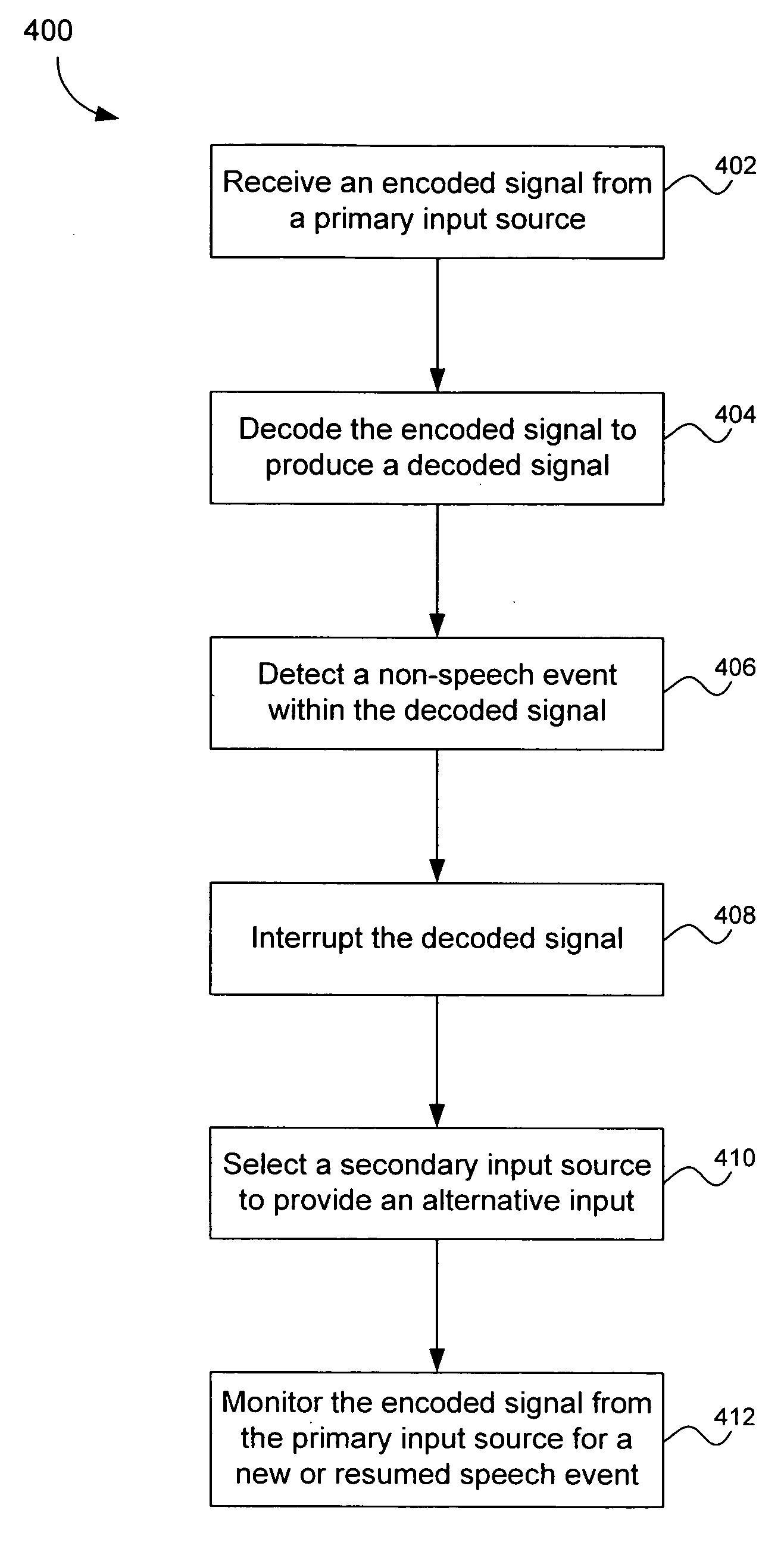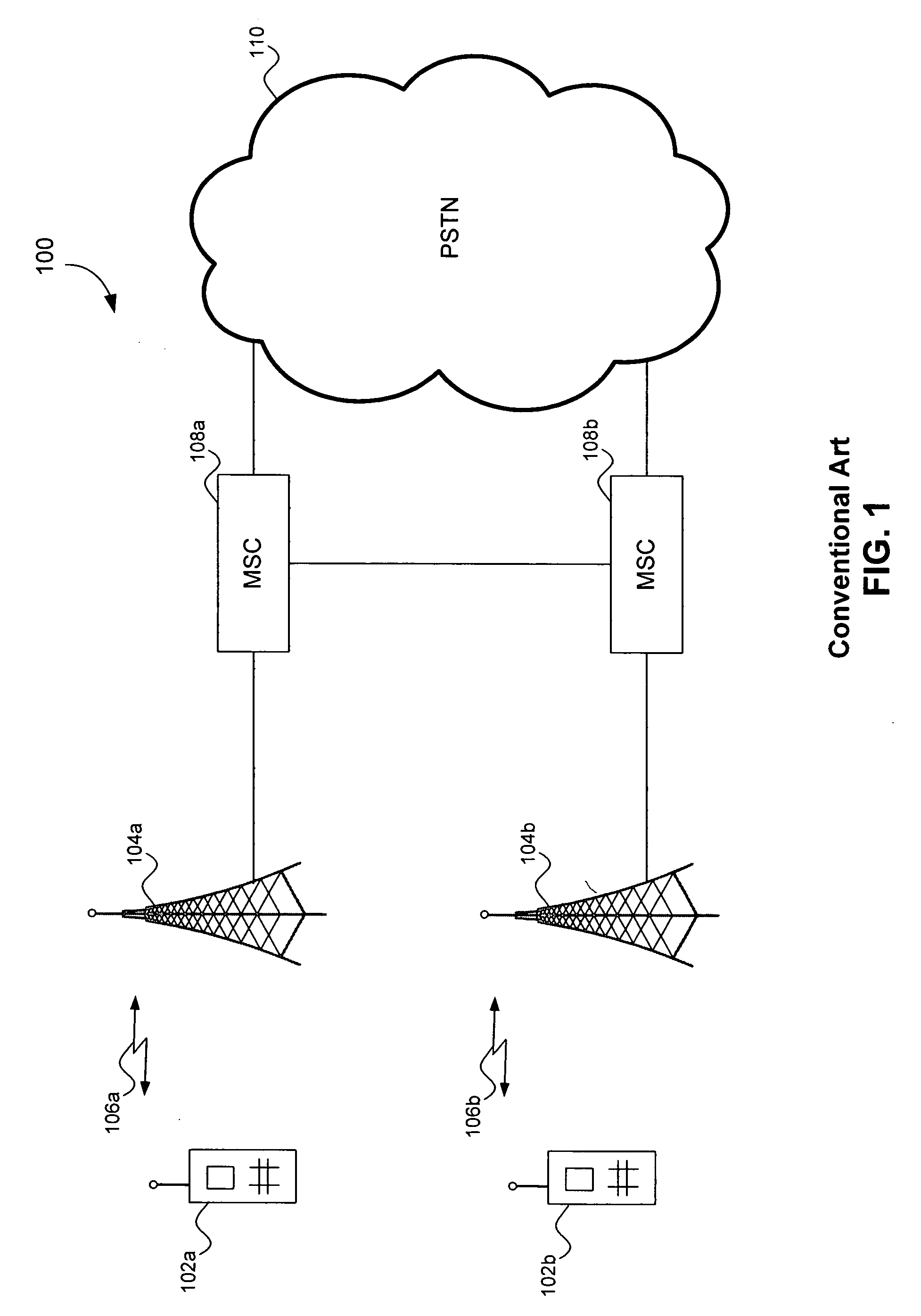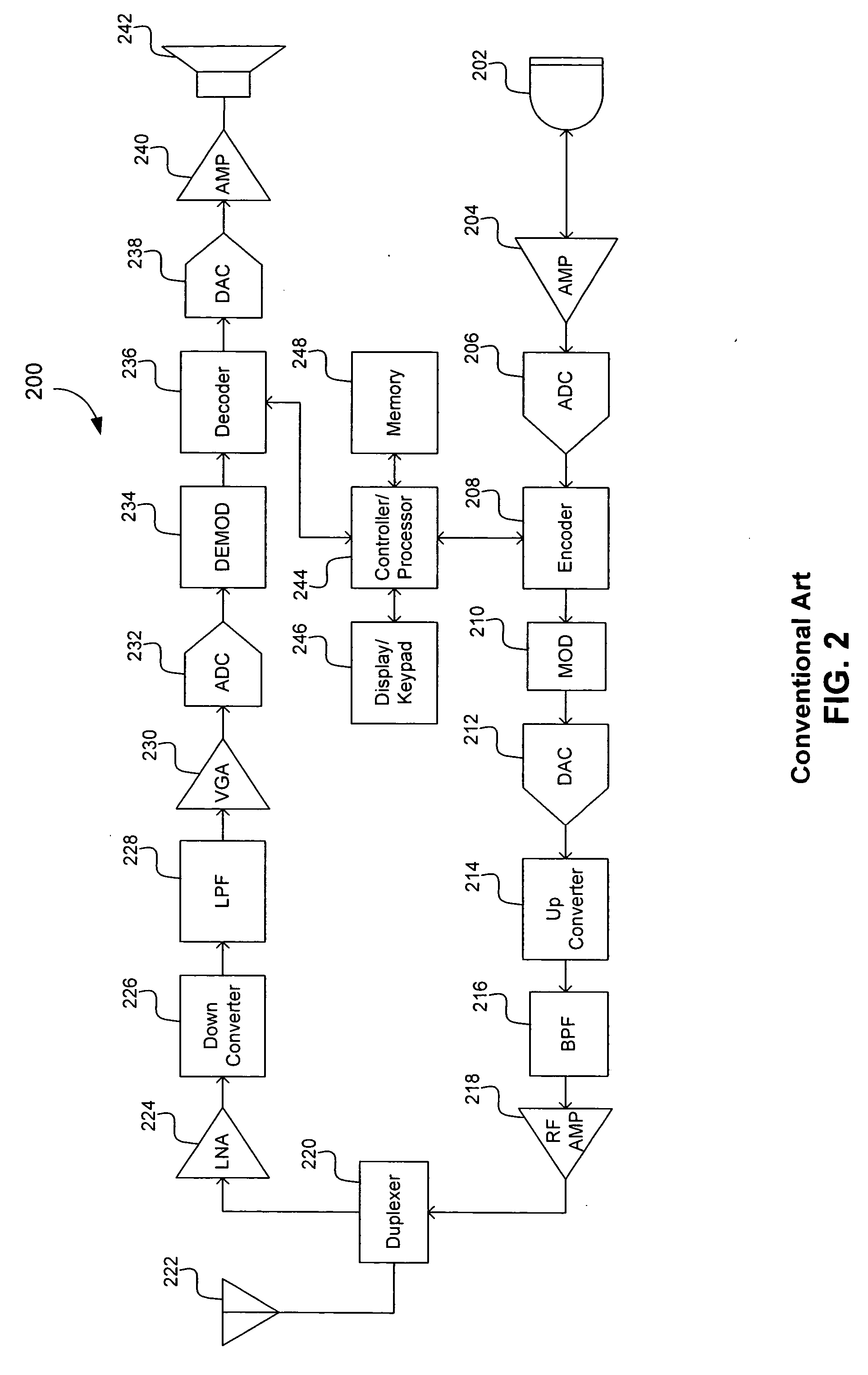User-selectable music-on-hold for a communications device
a communication device and user-selectable technology, applied in the field of communication devices, can solve the problems of low perceptual quality of output signals, music is a signal that typically suffers in quality, and may suffer in non-speech signals
- Summary
- Abstract
- Description
- Claims
- Application Information
AI Technical Summary
Benefits of technology
Problems solved by technology
Method used
Image
Examples
first embodiment
[0041] The decoder 302 and / or the detector 304 can be used to detect non-speech signals within a voice communication signal received from a remote communication device. In the present invention, the decoder 302 receives an indication from a corresponding encoder specifying the type of signal being sent. That is, the encoder sends an encoded voice signal accompanied by a label or flag. The flag is detected by the decoder 302. The flag signal can be used to distinguish encoded speech signals from encoded non-speech signals. Consequently, the decoder 302 can determine the beginning and end of a non-speech signal within a received encoded signal. Under this scenario, the flag signal must be accommodated by the received signal stream specified by the wireless protocol governing operation of the cellular telephone 300. Stated another way, the non-speech signal is indicated or identified by signaling or direct communication from the encoder to the decoder, using for example a control signa...
second embodiment
[0042] In the present invention, the detector 304 is a non-speech signal detector. The non-speech signal detector 304 can detect the presence of a non-speech signal in a received encoded signal. Alternatively, the non-speech signal detector 304 can be configured to detect the start and duration of a non-speech signal in a decoded signal produced by the decoder 302. Detection of non-speech signals by the detector 304 may be necessary when the wireless protocol governing operation of the cellular telephone 300 does not support the addition of signal labels. Detection of non-speech signals by the detector 304 may also be necessary if the encoder in a remote device is unaware of the capabilities of the cellular telephone 300 and therefore refrains from transmitting a signal label flag.
[0043] In yet another embodiment, a control signal indicating or identifying the non-speech signal is sent directly to the controller so as to trigger the use of the secondary source. In other words, the c...
PUM
 Login to View More
Login to View More Abstract
Description
Claims
Application Information
 Login to View More
Login to View More - R&D
- Intellectual Property
- Life Sciences
- Materials
- Tech Scout
- Unparalleled Data Quality
- Higher Quality Content
- 60% Fewer Hallucinations
Browse by: Latest US Patents, China's latest patents, Technical Efficacy Thesaurus, Application Domain, Technology Topic, Popular Technical Reports.
© 2025 PatSnap. All rights reserved.Legal|Privacy policy|Modern Slavery Act Transparency Statement|Sitemap|About US| Contact US: help@patsnap.com



